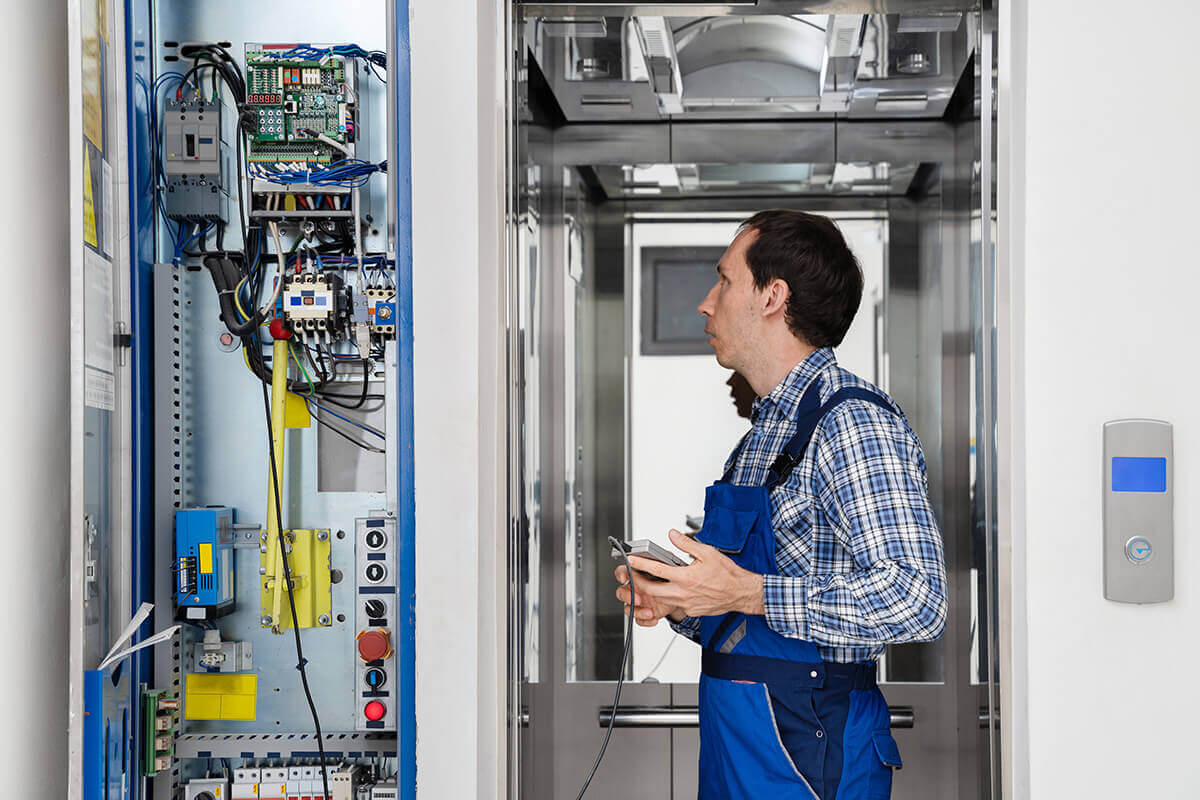Comprehensive Overview to Elevator Systems and Their Upkeep
Browsing the elaborate world of lift systems and their maintenance is a task that requires accuracy and expertise. From the different sorts of lift systems in operation to the careful adherence to safety regulations, the upkeep of these upright transport gadgets is a multifaceted undertaking. As structures soar greater and modern technology advancements, the demand for a detailed understanding of elevator systems comes to be significantly vital. Join us as we decipher the intricacies of lift upkeep, checking out usual problems, best practices, and innovative technologies that shape the contemporary landscape of upright transport.
Kinds of Lift Solutions
The most typical types include hydraulic elevators, traction elevators, machine-room-less elevators, and vacuum cleaner lifts. Hydraulic lifts are excellent for low-rise structures and make use of a hydraulic piston to relocate the lift auto. Machine-room-less lifts are a space-saving alternative as they do not call for a different equipment area for the lift equipment.
Each sort of elevator system has its own advantages and disadvantages, making it vital for structure proprietors and designers to thoroughly consider their particular requirements before choosing the most suitable option. Factors such as constructing elevation, area accessibility, energy efficiency, and spending plan restraints all play a considerable role in determining the most effective lift system for a particular structure.
Usual Maintenance Issues
Regular upkeep of elevator systems is crucial to guarantee smooth procedure and prolong their life-span. Despite routine upkeep, lift systems can still experience common upkeep issues that need to be promptly resolved to stop interruptions in service. Among the most constant problems is door breakdowns. Elevator doors may obtain misaligned, resulting in problems with opening and closing correctly. This can create delays and safety risks, requiring instant interest from upkeep service technicians. An additional usual problem is connected to the lift's leveling precision. If the lift doesn't line up properly with the floorings, passengers may experience tripping risks and discomfort. In addition, issues with the control system, such as sensor issues or electric issues, can trigger the lift to breakdown or quit functioning altogether. Routine examinations and proactive maintenance can assist recognize and deal with these typical upkeep concerns prior to they intensify and affect the general efficiency of the elevator system.
Safety And Security Rules and Compliance
Sticking to rigid security regulations and ensuring conformity with market standards are paramount for maintaining the functional integrity of lift systems. Lifts are subject to a thorough collection of safety regulations to guard travelers, upkeep employees, and the public. Governing bodies such as the Occupational Security and Health Management (OSHA) in the United States and the European Lift Organization (ELA) in Europe establish standards that cover different aspects of elevator layout, operation, installment, and maintenance.
Compliance with these guidelines is not only a legal need but likewise an ethical responsibility for structure owners and elevator upkeep companies. Failure to fulfill safety requirements can cause fines, lawful obligations, and, most importantly, threaten the safety and security of people using the elevator. Normal inspections, maintenance checks, and adherence to safety and security protocols described in the laws are necessary to make sure the efficient and risk-free procedure of elevator systems. By prioritizing safety and security policies and conformity, stakeholders can promote the count on of the general public and minimize potential risks connected with lift usage.
Best Practices for Upkeep

Building owners must also take into consideration investing in innovation upgrades to improve the efficiency and safety and security of their elevator systems. By adhering to these best techniques, elevator systems can run smoothly and securely, offering reliable vertical transport for passengers.

Advanced Technologies for Performance
Applying sophisticated modern technologies in lift systems can significantly enhance operational efficiency and passenger experience. lift maintenance company. Among the essential developments in elevator technology is the intro of location control systems. These systems permit travelers to input their desired floor prior to going into the elevator, which then routes them to one of the most effective vehicle. By optimizing and minimizing unneeded quits travel paths, destination control systems reduce wait times and congestion in high-traffic structures.
Additionally, the integration of clever sensors and anticipating maintenance capacities has actually reinvented elevator upkeep. These sensors can detect potential concerns prior to they intensify, enabling positive maintenance interventions and decreasing downtime. Furthermore, making use of energy-efficient elements and regenerative drives helps lower power consumption and operating expense in elevator systems.
Additionally, the implementation of cloud-based monitoring and remote diagnostics permits real-time monitoring of lift performance and instant troubleshooting of any kind of malfunctions. This positive strategy not only enhances system reliability however also enhances the total customer experience by guaranteeing smooth and nonstop elevator operations.
Verdict
In conclusion, understanding the different kinds of lift systems, common upkeep issues, safety and security policies, finest maintenance techniques, and progressed technologies for efficiency is vital for making certain the smooth procedure of elevators. By adhering to safety policies and executing finest practices for maintenance, structure proprietors can extend the life expectancy of their elevator systems and make sure the safety of travelers. It is very important to remain upgraded on the most up to date innovations reference in lift modern technology to enhance effectiveness and dependability.
The most typical types include hydraulic elevators, grip lifts, machine-room-less lifts, and vacuum cleaner elevators. Hydraulic elevators are perfect for low-rise buildings and use a hydraulic piston to relocate the lift auto. Machine-room-less lifts are a space-saving choice as they do not need a separate machine space for the lift machinery. Regular assessments and aggressive maintenance can help determine and settle these usual upkeep issues before additional reading they rise and affect the overall efficiency of the elevator system.

Comments on “Top Lift Repair Companies Near Me for Trustworthy Maintenance Services”